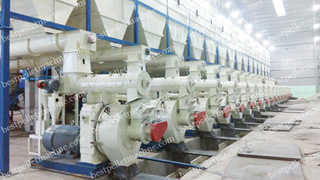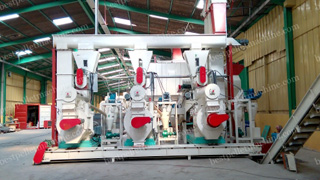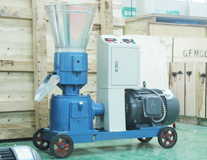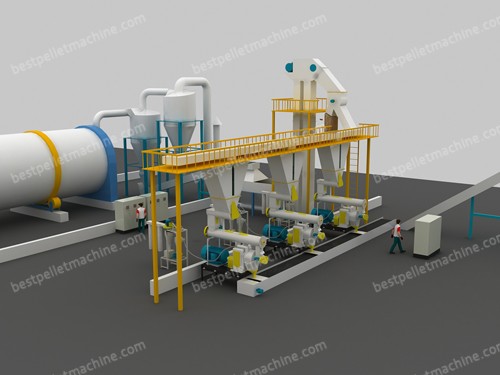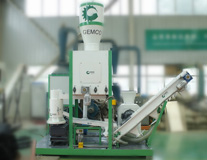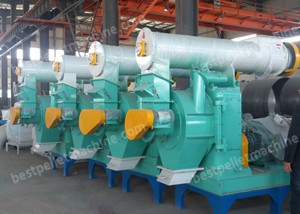The pelletization of biomass depends on certain requirements of material type, particle size and moisture content.
 Besides cellulose and hemicelluloses, plant cells also contain lignin, which is a monomer that has aromatic characteristics and the propane type polymer compound three-dimensional structure. In hardwood and softwood, lignin content is 27% ~ 32% (dry basis); while in grasses, lignin content is 14% to 25%. Although all kinds of plants contain lignin, their composition and structure vary.
Besides cellulose and hemicelluloses, plant cells also contain lignin, which is a monomer that has aromatic characteristics and the propane type polymer compound three-dimensional structure. In hardwood and softwood, lignin content is 27% ~ 32% (dry basis); while in grasses, lignin content is 14% to 25%. Although all kinds of plants contain lignin, their composition and structure vary.
Lignin is a non- crystalline, having no melting point but a softening point. When the temperature reaches 70 ~ 110℃, the adhesive force begins to increase; while it will soften and liquefy at a suitable temperature (200 ~ 300℃). If added some pressure, the lignin with be closely bonded with cellulose and glued with neighboring particles. Then after cooling, they will be solidified and form particular shape. So using hot pressing for straw (or wood) fuels pelleting do not need any additives or adhesives, which greatly reduces the processing costs. In addition, using softening and liquefaction characteristics of lignin and appropriately increasing the thermoforming temperature can help to reduce the extrusion force.
 Obviously, too low temperature is insufficient for the shaping of lignin, while too high temperature will cause serious material decompose and transport fast, which cannot form an effective pressure and cannot shape. In short, different materials desire similar temperature, generally 100℃ -200℃. However, due to increased production, too much friction tends to produce great heat, which will cause serious damage to the equipment. Therefore we proposed it necessary to control and maintain the biomass pelletization temperature.
Obviously, too low temperature is insufficient for the shaping of lignin, while too high temperature will cause serious material decompose and transport fast, which cannot form an effective pressure and cannot shape. In short, different materials desire similar temperature, generally 100℃ -200℃. However, due to increased production, too much friction tends to produce great heat, which will cause serious damage to the equipment. Therefore we proposed it necessary to control and maintain the biomass pelletization temperature.
Moisture content of raw material for pelletzing process
The moisture content of raw material can greatly affect the pelletizing process and the product quality. If the raw material contains too much water, the vapor generated during the heating process cannot be smoothly discharged from the fuel center hole, causing the surface cracking, even producing severe detonation. If the water content is too low, it is too difficult for shaping, since small amount of water can promote the softening and forming of lignin.
For wood sawdust, straw and other materials, the suitable moisture content for pelletizing ranges from 8 % to 14%. Although different materials differs in lignin content, the suitable moisture content desired for pelletizing is basically the same .
By Shirley Wang



